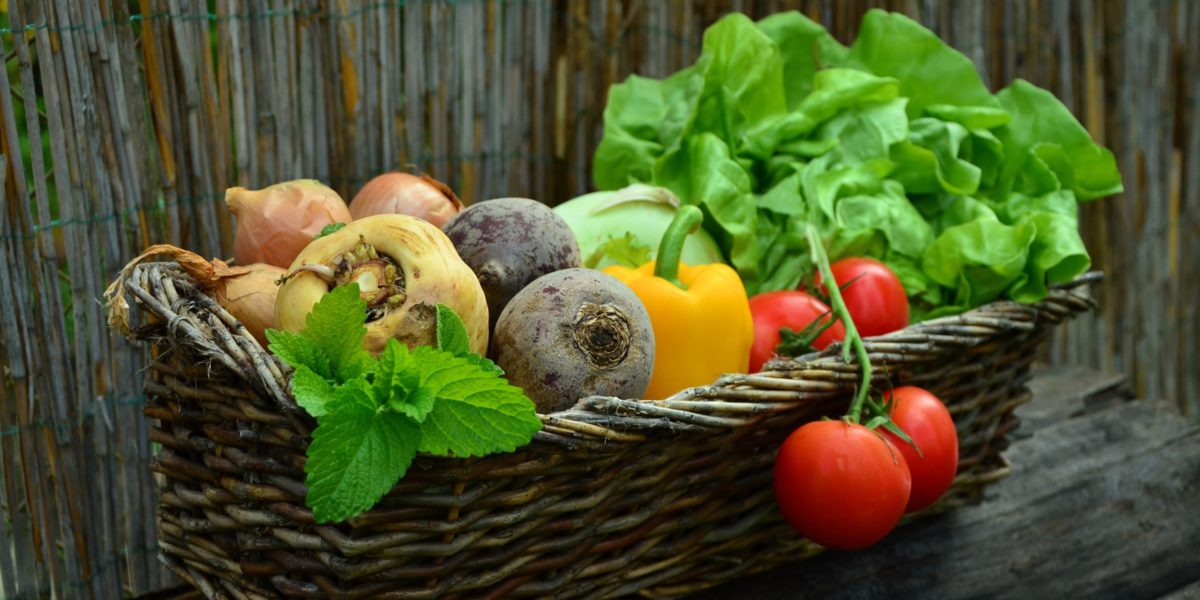Canada’s economy has been closely aligned with that of the US for decades. In 1988 as the first free trade agreement with the United States was being presented, many of us demonstrated and campaigned against that agreement underscoring how it would negatively impact our social programs, social safety net, our economy, our culture — indeed our independence and sovereignty.
Since then there have been unfair trade practice threats made by the United States administrations related to our system of agriculture, in particular about supply management of the dairy industry, orderly marketing systems, and more. The erosion of our programs has been steady, and, if not covert, definitely not transparent.
It is heartening to see so many Canadians now understand the general impact (if not the detail) of United States tariff threats, despite signed free trade agreements.
So this spring, as we head into early April and continue to see US president Donald Trump talk of tariffs, it’s time to arm ourselves with information on our food pathways and the resources that we have at hand. We need to understand our strengths and our weaknesses when it comes to producing and distributing food in this country.
As well, we need to understand the flow of imports and exports in our food system in order to explain why we need to take buying Canadian products seriously. Because of free trade we have often imported vegetables from the US that we could be self-sufficient in producing. Why would we import vegetables from anywhere, when with a bit more planning we could be self-sufficient and buy Canadian grown products? Are we exporting our surplus, or playing the import/export game that profits transnational distributors?
We may at times be importing because of our shorter growing season, but in many cases it is quite simply for the sake of convenience or to allow the food conglomerates which distribute food to profit by importing and exporting. For example – ask yourselves – why do we import carrots or cabbage when they are in-season? And in between harvests, cold storage keeps many of our crops fresh until the next season! Same with apples! It is March and I am still buying Canadian apples!
Statistics show that Canada is able, and in fact does, produce enough carrots, cabbage, potatoes, onions, etc. to supply its own market. So why import this produce from the USA? They call it free trade… and it makes you wonder who benefits from the back and forth of the import/export game. Beyond the raw price of produced, consider the impact on climate change of shipping products back and forth constantly.
Yet, Canada relies heavily on imports from the United States for various fruits and vegetables. According to data from 2019, the U.S. was the top source of Canada’s fruit imports, accounting for 40 per cent of the value, with Mexico following at 17 per cent. Regarding vegetables, U.S. states supplied 67 per cent of Canada’s vegetable imports in 2022.
The Beyond project, at the University of British Columbia, has an interactive map which shows the flow from Canada of imports and exports of vegetables and fruit. The map tracks imports and exports to and from the United States as well as 149 other countries. Here you can read a summary of how the US and other countries supply the Canadian food market. And for a more specific view of a particular vegetable or fruit, Beyond provides this interactive map.
Rather than despair in the face of the tariff wars, you also need to see the positive side of what is possible in terms of food self-sufficiency in Canada. How many more jobs could be created by making our food systems more sustainable and ensuring self-sufficiency and distribution here in Canada?
These are important questions that we are only just beginning to explore.
Eating through and beyond the tariffs…
So, what vegetable and fruit crops could Canada be easily self-sufficient in?
Vegetables
- Potatoes: Canada is already a major producer of potatoes, particularly in provinces like Prince Edward Island, Manitoba, and Alberta. The climate is well-suited for growing potatoes, and they are a staple crop that could easily support national self-sufficiency. Canada produces about 100 per cent of its domestic potato consumption.
- Carrots: Carrots are widely grown in Canada, particularly in provinces with fertile soil such as Ontario and Quebec. They have a long growing season and can be stored well for use throughout the year. Canada produces approximately 80-90 per cent of its carrot consumption. The remaining demand is met by imports, mostly from the U.S. during off-seasons.
- Cabbage: Cabbage is a hardy vegetable that grows well in Canada’s cooler climates. It is widely grown in regions like the Prairies and Ontario. The vegetable has a long shelf life and can be stored for winter months. Canada produces 85-90 per cent of its cabbage consumption. Imports, especially from the U.S., make up the rest, particularly in the winter months.
- Onions: Canada produces a good amount of onions, particularly in regions like Ontario, Quebec, and Alberta. Onions are versatile and can be grown in most parts of Canada during the warmer months. Canada produces around 70-80 per cent of its onion consumption, with the remainder being imported from the U.S. and other countries, particularly during the winter.
- Lettuce and Leafy Greens: While more temperamental than some other crops, leafy greens like lettuce, spinach, and kale can be grown in greenhouses or during the warmer growing seasons. The demand for fresh greens has been increasing, and greenhouse technology could support domestic production. Canada produces about 50-60 per cent of its lettuce and leafy greens, with the rest being imported, especially from California and Mexico. The import percentage tends to be higher during the colder months when domestic production is limited.
- Beans (e.g., peas, kidney beans, lentils): Canada is already a major producer of pulses, especially lentils and peas, particularly in Saskatchewan and Alberta. Pulses are an excellent source of protein, and growing more of them could support self-sufficiency. Canada is highly self-sufficient in pulses, producing over 90 per cent of its pulse consumption. The country is one of the largest producers and exporters of lentils, peas, and beans, especially in Saskatchewan and Alberta.
Fruits
- Apples: Apples are one of the most widely grown fruits in Canada, with significant production in British Columbia, Ontario, and Quebec. Canada has the climate for growing a variety of apple cultivars, and the domestic apple industry is robust. Canada produces approximately 60-70 per cent of its apple consumption. The rest is imported, primarily from the U.S., particularly in the off-season.
- Blueberries, Strawberries, Raspberries: Canada has a good potential for berry production, particularly in the cooler climates of British Columbia, Quebec, and Ontario. Blueberries, in particular, have become a significant export crop, and with more investment. Canada could easily become self-sufficient in berries. Canada is a major blueberry producer and meets about 80-90 per cent of its domestic blueberry consumption, with the remainder coming from imports. Canada produces about 60-70 per cent of its strawberry consumption, with imports from the U.S. and Mexico filling the gap.Canada produces about 50-60 per cent of its raspberry consumption, with the rest being imported from the U.S. and other countries.
- Cranberries: Canada is already a major producer of cranberries, especially in the eastern provinces of Quebec and British Columbia. The cold climate is ideal for cranberry production, and the industry is well-developed. Canada produces approximately 100 per cent of its cranberry consumption. The country is one of the world’s largest producers of cranberries, with significant production in Quebec and British Columbia.
- Pears: Pears are grown in several regions of Canada, particularly in British Columbia. The country could easily increase its pear production, especially given the right varieties and the existing orchard infrastructure. Canada produces about 30-40 per cent of its pear consumption, with the majority of pears being imported from the U.S. and Argentina.
- Grapes: Canada, particularly in Ontario and British Columbia, produces a variety of grapes, especially in wine regions like Niagara and the Okanagan Valley. With increasing demand for domestic wine and table grapes, there is room to expand self-sufficiency. Canada produces about 50-60 per cent of its grape consumption. The remainder is imported, particularly from the U.S. and Mexico, as Canadian production is more focused on wine grapes (especially in Ontario and British Columbia).
- Plums and Cherries: Both plums and cherries thrive in the warmer climates of regions like British Columbia and Ontario. Canada could increase its production to support self-sufficiency, especially with growing domestic demand. Canada produces about 40-50 per cent of its plum consumption, with imports coming from the U.S. and other countries. As for cherries, Canada produces around 50-60 per cent of its domestic cherry consumption, with the remainder being imported from the U.S., particularly in the off-season.
(Source: https://agriculture.canada.ca/en)
Challenges
There are of course challenges to our self-sufficiency in some crops. For example, oranges and bananas do not grow in Canada. That said, countries other than the US raise these crops, and others that we cannot harvest in Canada. Meanwhile, to avoid importing some foods and encourage the move toward self-sufficiency might require improving cold storage facilities or preservation methods such as freezing, canning, or root cellars, to maintain year-round supply. As well, greenhouse technologies and hydroponics could be expanded to improve Canada’s ability to grow a wider variety of crops, especially in colder regions.
Our great-grandparents had root cellars, but no freezers. Many made preserves and canned both fruit and vegetables to see them through the winter. We actually benefit from all storage methods. And if we learned to eat fruits and vegetables when they are in season, and preserve/conserve for when they are not, we could greatly expand our own individual food pathways or support local businesses doing the same. Buying local will also help our farm communities and hopefully small farmers. And growing some of our own needs in our own small gardens can also support our food budgets. My one loganberry bush has provided me with a year’s worth of jams and sauces.
And as noted earlier, lessening our reliance on imported foods which we can grow ourselves would also go a long way to reducing our carbon footprint.
The Canadian and United States administrations have created a two-way dependency through importing and exporting food produce as well as other goods. It is time to move away from engaging with our southern neighbour and restructure our food systems to meet our domestic needs first!
So my friends – do not despair, just prepare.



